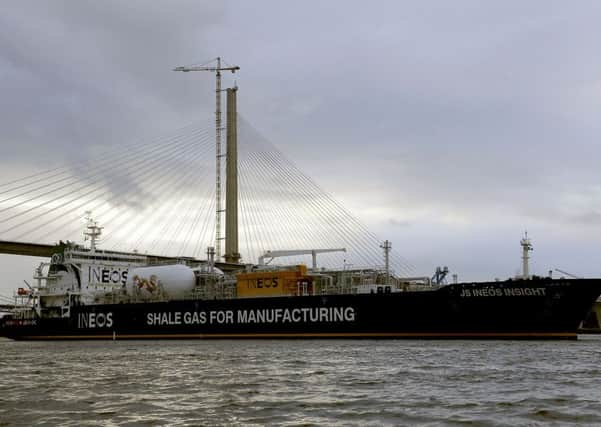Ilona Amos: It's our last chance to be heard on plans to frack in Scotland


A moratorium on the practice has been in force since January 2015 to allow the Scottish Government time to investigate the impacts of the controversial technique, which involves injecting a high-pressure mixture of water, sand and a combination of chemicals into rock formations deep underground in order to extract shale gas or oil or coalbed methane – which come under the banner of unconventional oil and gas (UOG) – trapped within.
Scottish ministers have already opted to outlaw underground coal gasification – another, largely untested, UOG extraction technique – on the grounds of being too risky.
Advertisement
Hide AdAdvertisement
Hide AdThe arguments for and against fracking, properly known as hydraulic fracturing, have divided politicians and communities.
Those who support the practice claim the industry could generate £1.2 billion for the Scottish economy and create 1,400 jobs, while community benefits schemes could fund local investment. They say exploiting the resource would also help guarantee gas supplies as offshore reserves in the North Sea dwindle, though energy bill are unlikely to come down.
But opponents say risks to human health and the environment from air pollution, earthquakes and water contamination are too great, while plundering new fossil fuel sources would jeopardise Scotland’s ability to meet climate change emissions targets.
According to official figures, Scottish households and businesses together consume around 150 billion cubic feet of gas each year, with nearly four out of five homes relying on mains gas as their primary source of heating.
Estimates suggest the country’s Midland Valley could contain nearly 50 trillion cubic feet of shale gas, although experts believe only a fraction of that – around two per cent – could be extracted at a cost that would make it commercially viable. By my count that amounts to a six-year supply.
Labour, the Greens and the LibDems are all calling for fracking to be outlawed, while the Tories say it should go ahead. A vote in the Scottish Parliament last year saw MSPs come out 32 to 29 in favour of a ban after the SNP abstained.
Licences are already in place to allow exploration and drilling across large swaths of the central belt should fracking get the green light. This same area is also one of the most densely populated parts of Scotland, so whatever happens here will have a direct effect on a lot of people.
At least 30 local protest groups have sprung up around Scotland to fight exploitation of unconventional gas and oil, while many of the major environmental campaign groups such as Friends of the Earth Scotland are also opposed.
Advertisement
Hide AdAdvertisement
Hide AdToday representatives from Torrance Fracking Say No, a campaign group from East Dunbartonshire and part of the Broad Alliance of community groups, will be at the Scottish Parliament to present a petition to MSP Rona Mackay. They have gathered 5,000 signatures from around the local area, demanding an outright ban.
Perhaps you’re for fracking, perhaps you’re not. Whatever, If you haven’t already done it, now is the time to make your feelings known. You can respond to the consultation on the Scottish Government website.
The final decision is expected to be made by ministers later this year.